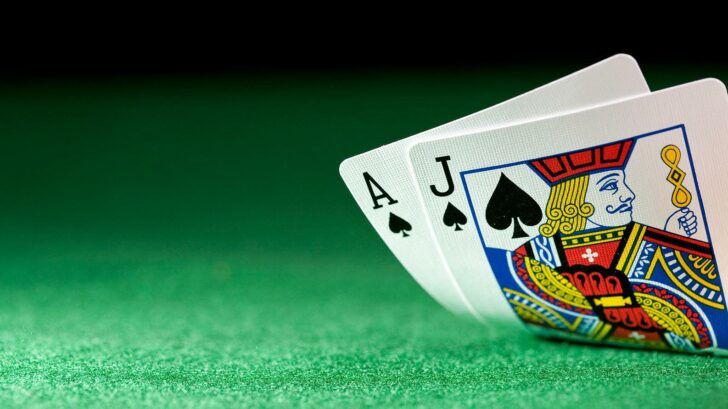Not Just What, But Where: House Edge by Geography

 You’ll win!
You’ll win!Geographical variations in game style and gambling laws can tell you where to find the best odds
We know that different games carry different house edges. Blackjack and baccarat have relatively low edges, standing in stark contrast to big-time losers like keno and slots. Aside from that, the lowest figures can usually be found in online casinos rather than land-based establishments.
But if you want to be a true casino strategy superstar, you need to learn another facet of the house edge. The same game can be more or less lucrative for you depending on the geographical location of the casino. If you play six deck blackjack in Las Vegas, Atlantic City or Europe, you will have different odds of winning in each place. The same goes for slots and roulette. After reading this piece, you will know not only what to play, but where to play.
A tale of two continents
No game shows a greater variance in house edge by location than roulette. In our first piece we described roulette as carrying an edge of 5.3 percent, high for most table games. That statement was true, but only for the United States. European roulette tells a quite different story.
European roulette, sometimes referred to as “French Roulette”, was invented in France during the 17th century, predating the American version. The house edge in this version of the popular game of chance is 2.7 percent, barely over half of what we find in America. So if you want to leave the casino with your skin intact, spin the wheel in Paris or Monaco, not Las Vegas.
Why the difference? An American roulette wheel has a double zero, giving it 38 numbers total. The European version has only a single zero, so 37 total. One less number means one less way to lose, giving players better odds of winning. Are you surprised that adding one extra number to the wheel would double the casino’s edge? We are too, but that’s the way it works.
Another way in which American casinos carve out a larger edge is through the “Top Line” bet feature. This involves gamblers placing bets on 0,00, 1 and 2 simultaneously. The players odds of winning are relatively high at 6-1, the payout is lower, increasing the house edge.
There are many blackjacks
The most popular casino game on earth is also one of the simpler ones. You try to get to 21, or as close to it as possible without going over. The theoretical house edge is .5 percent, which in reality comes out to about 2 percent after accounting for player miscalculations. But the theoretical house edge isn’t .5 percent everywhere, that’s just the average figure.
Atlantic City blackjack carries the lowest edge around at .42 percent, compared to .53 percent on the Vegas Strip. Why the difference? Atlantic City casinos pay out 3/2 when the player hits a blackjack. So the odds of winning are the same, but the potential rewards are higher than in Vegas. This should entice some enthusiasts to trek East rather than West to play the popular table game.
While Europe is a better bet for roulette, due to blackjack rule variations the cards are stacked heavily in favor of the casino compared to Vegas and Atlantic City. The house edge for European six deck blackjack is .62 percent. Granted, this figure is still small, but it makes a difference to gamblers. One key difference is that according to European rules the dealer is required to stand on a “soft” 17 (hand containing an ace and a six), while in American rules the dealer is required to hit.
Hitting on a 17 typically carries a high amount of risk, and players are advised to stand in most such situations. So by standing automatically the dealer will win more hands over an extended period of time, meaning a higher house edge and lighter pockets for gamblers.
The bad, the slightly better and the ugly
The house edge on a slot machine is subject to local or national regulation in most countries. The first piece in this series listed 15 percent as the general edge in the United States. Depending on the state this figure can vary from as low as 2 percent to as high as 25 percent at some casinos in Nevada and 17 percent in New Jersey; in any case a bad bet for gamblers. The machine’s payout percentage, which refers to the edge, is controlled by the software program in charge of the machine.
Some countries have tighter regulations on slot payouts, reducing the house edge of the casino. In Australia for example, the lowest legal payout percentage which can be found is 15 percent. In Queensland, for example, machines can have an edge as high as 15 percent, but machines found inside casinos cannot have an edge higher than 10 percent.
This is not the case in the UK, which has no legal minimum payout ratio. While manufacturers assert that most slot machines there carry an edge of 5 percent, some are reported to take as much as 30 percent. This large edge is very lucrative for British casinos, which generally make between 60 and 80 percent of their revenue off these machines.
Where to gamble?
The best geographical locations for getting a return on your money depends on which game you play. The blackjack cards are always weighed only slightly in the house’s favor, but the lowest edge can be found in Atlantic City with the highest being in Europe. When it comes to baccarat, a slight variation in the rules means that players have a much higher chance of winning in Europe than in the US. Lastly, we would never advise anyone to play slots in a land-based casino (there is no easier way to lose money). But if you insist on it, Australian machines carry lower house edges than most of those found in the US; Britain has no regulations on maximum house edge at all.





4 Comments
There is misinformation in this article regarding hitting on a soft 17 in blackjack and on slot payouts in the US.
Hitting a soft 17 is not something that carries a high amount of risk. It’s basic strategy. And when a casino does it, it increases the casino’s house advantage.
According to publicly available slot payout information from various states, I have rarely seen payouts below 88% or 89% from penny slots, with higher denominations invariably having a higher payout percentage than that.
Where did you get your information?
Dear a.d.
Thank you for comment. With regards to casinos having a higher house edge when dealer hit on soft seventeen, the article was mistaken and will be corrected.
With regards to slot machine payouts, the figures for the US and UK were taken from two articles in the UK Daily Mail, while the figures for Australia were found on Wikipedia.
Thank you for taking your time to deal with these issues, and we strive to produce better and more accurate material in the future.
As a reward for pointing out our mistake, we are ready to research and publish an article about a subject that you are free to choose. Naturally, it should be something of interest or use to other visitors, so let’s stick with blackjack related subjects for now 🙂
Links:
http://www.dailymail.co.uk/news/article-2555025/Who-Lions-Share-Las-Vegas-slot-machine-hit-jackpot-20-years-attracts-generations-gamblers-eager-win-2-3-MILLION-prize.html
http://www.dailymail.co.uk/home/moslive/article-1190571/Taking-1-giving-70p-How-fruit-machine-ripping-Britain.html
http://en.wikipedia.org/wiki/Slot_machine
There is misinformation in this article regarding hitting on a soft 17 in blackjack and on slot payouts in the US.
Hitting a soft 17 is not something that carries a high amount of risk. It’s basic strategy. And when a casino does it, it increases the casino’s house advantage.
According to publicly available slot payout information from various states, I have rarely seen payouts below 88% or 89% from penny slots, with higher denominations invariably having a higher payout percentage than that.
Where did you get your information?
Dear a.d.
Thank you for comment. With regards to casinos having a higher house edge when dealer hit on soft seventeen, the article was mistaken and will be corrected.
With regards to slot machine payouts, the figures for the US and UK were taken from two articles in the UK Daily Mail, while the figures for Australia were found on Wikipedia.
Thank you for taking your time to deal with these issues, and we strive to produce better and more accurate material in the future.
As a reward for pointing out our mistake, we are ready to research and publish an article about a subject that you are free to choose. Naturally, it should be something of interest or use to other visitors, so let’s stick with blackjack related subjects for now 🙂
Links:
http://www.dailymail.co.uk/news/article-2555025/Who-Lions-Share-Las-Vegas-slot-machine-hit-jackpot-20-years-attracts-generations-gamblers-eager-win-2-3-MILLION-prize.html
http://www.dailymail.co.uk/home/moslive/article-1190571/Taking-1-giving-70p-How-fruit-machine-ripping-Britain.html
http://en.wikipedia.org/wiki/Slot_machine